
Click the following link for a safe PDF copy: Shaykh Abū Basīr al-Ṭarṭūsī — “The Sunnah of Iraq Between Two Swords- The Sword of the Ghulāt al-Rawāfiḍ and the Sword of the Ghulāt al-Khawārij”
___________
To inquire about a translation for this article for a fee email: [email protected]
Category: Iraq
al-Ḥayāt Media Center presents a new issue of the Islamic State of Iraq and al-Shām’s magazine: “Islamic State Report #4"
NOTE: For earlier issues see: #3, #2, and #1.
—
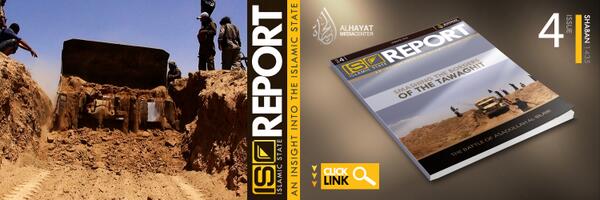
Click the following link for a safe PDF copy: Islamic State of Iraq and al-Shām — “Islamic State Report #4″
__________
al-Ḥayāt Media Center presents a new video message from the Islamic State of Iraq and al-Shām: "There Is No Life Without Jihad"
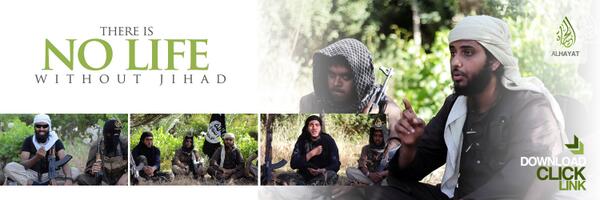
___________
Hizballah Cavalcade: From Najaf to Damascus and Onto Baghdad: Iraq’s Liwa Abu Fadl al-Abbas
NOTE: For prior parts in the Hizballah Cavalcade series you can view an archive of it all here.
—
From Najaf to Damascus and Onto Baghdad: Iraq’s Liwa Abu Fadl al-Abbas
By Phillip Smyth

Figure 1: Liwa Abu Fadl al-Abbas Tashkil al-Iraq’s logo.
Liwa Abu Fadl al-Abbas (LAFA) is still the best known of the Iraqi Shia staffed militias operating within Syria. The creation of the organization and successful marketing of its narrative; which cast the group as the “defenders of the Sayyida Zaynab Shrine” south of Damascus, set the stage for Shia Islamist foreign fighters to join the battle in Syria against rebel forces. Under the leadership of the Syrian Shia “Abu Ajeeb” in Damascus, the group has been deployed to numerous combat zones throughout Syria. While other foreign Shia fighters have been attached to the group, the primary nationality making up the ranks of LAFA has been Iraqi.
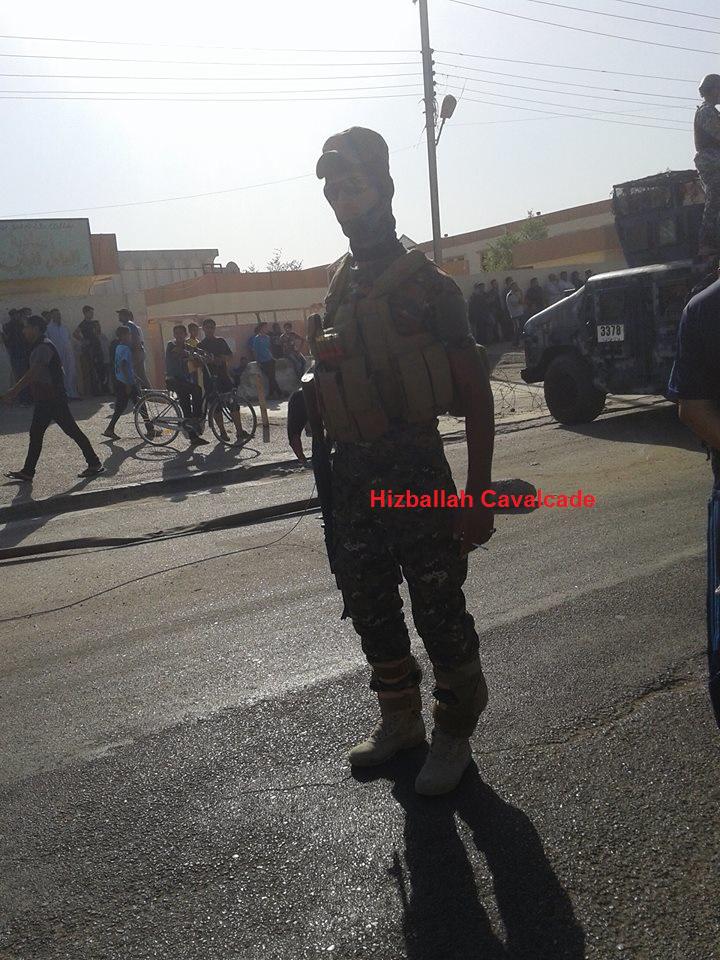
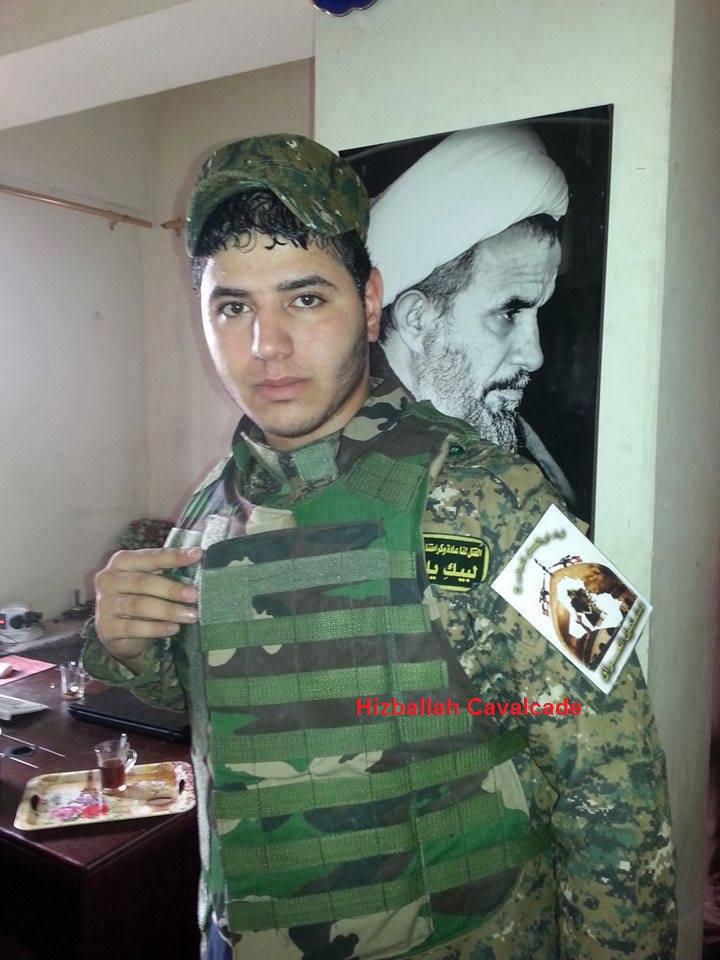
Figure 2: (left) A LAFA-Iraq fighter stands guard near Iraqi government forces. (Right) Another LAFA-Iraq member stands in an office.
Yet, LAFA’s name and possibly their geographic reach changed in 2014. Instead of using Iraq as a place simply to recruit more members for activities in Syria, LAFA adopted a new role as a Shia militia within Iraq. In fact, the new Iraq-focused LAFA may have more limited connections to the LAFA in Damascus, yet this does not mean that Iraqi Shia fighters affiliated with the Syrian-based LAFA are not active within the newer group’s ranks or have a longstanding affiliation with the new Iraq-based group.
The Iraq-focused section of LAFA, known as Liwa Abu Fadl al-Abbas Tashkil al-Iraq, (The Abu Fadl Abbas Brigade Iraq Formation or LAFA-Iraq), is led by Sheikh Qasim al-Ta’i. It also appears that LAFA-Iraq’s links are more directly associated with units of the so-called Rapid Reaction Force which was deployed to Damascus in early 2013. The force claims to have affiliations with the Iraq’s Internal Security Forces and Special Operations/SWAT teams.
LAFA-Iraq’s more structured Iraq-focused image first emerged on a number of Facebook pages in March 2014. This coincided with announcements by Iranian Shia Islamist proxy groups that they were actively involved in fighting within Iraq’s Anbar Province against rebel forces, included the Islamic State of Iraq and al-Sham. Often, photos of parading members wearing new Velcro patches featuring the group’s logo were uploaded. It is currently unknown how large LAFA-Iraq’s forces are or if their deployment within Iraq is limited to certain areas. In mid-June a video surfaced claiming the group was patrolling the Mansour section of Baghdad. Another report claimed that LAFA’s fighters in Syria had returned to Iraq in the wake of ISIS advances in the country. Their absence in Syria was reportedly filled by units belonging to Lebanese Hizballah.1 On June 16, 2014 post, it was also claimed that 1500 LAFA-Iraq fighters had been deployed to the holy city of Samarra, home of the Askari Shrine.

Figure 3: A LAFA-Iraq fighter stands in the bed of a pickup truck. His camouflage gear appears similar if not the same as the variety used by Lebanese Hizballah and LAFA forces operating in Syria.
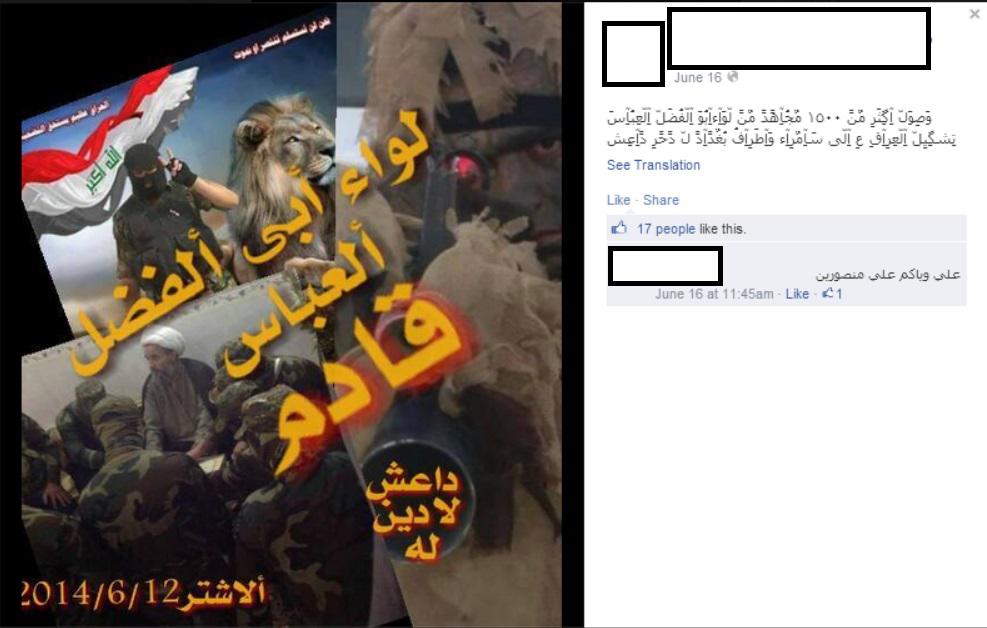
Figure 4: A screenshot of a LAFA-Iraq claim to have sent 1500 of their forces to Samarra.
As Iraq undergoes massive recruitment efforts for Shia fighters, it is likely that LAFA-Iraq has, along with other Iranian-proxy organizations, recruited new members and deployed fighters to key hotspots. Since a main narrative for the group has been their “defense of shrines,” it is possible the group has some contingent stationed in or around Iraq’s many holy Shia mosques/shrines. Additionally, with reports that fighters who gained experience on the battlefields in Syria have come back to Iraq, the group has an added punch.
While the group’s logo is a departure from LAFA-Syria’s more Hizballah themed symbols, it still uses imagery specific to the concepts first honed in Syria. The main theme is the notion of shrine defense, namely the golden dome found on the Sayyida Zaynab mosque/shrine and Shia religious themes present with the image of the historically important Abu Fadl al-Abbas. Abbas stands in the middle of a map of Iraq. Secondly, the more militaristic theme is furthered by the inclusion of two SVD-type sniper rifles. Thus, LAFA-Iraq’s symbolism plays on the fact that its recruits are Iraqi (with the map), but heavily includes transnational religious imagery to build the theme of Shia power and shrine defense.
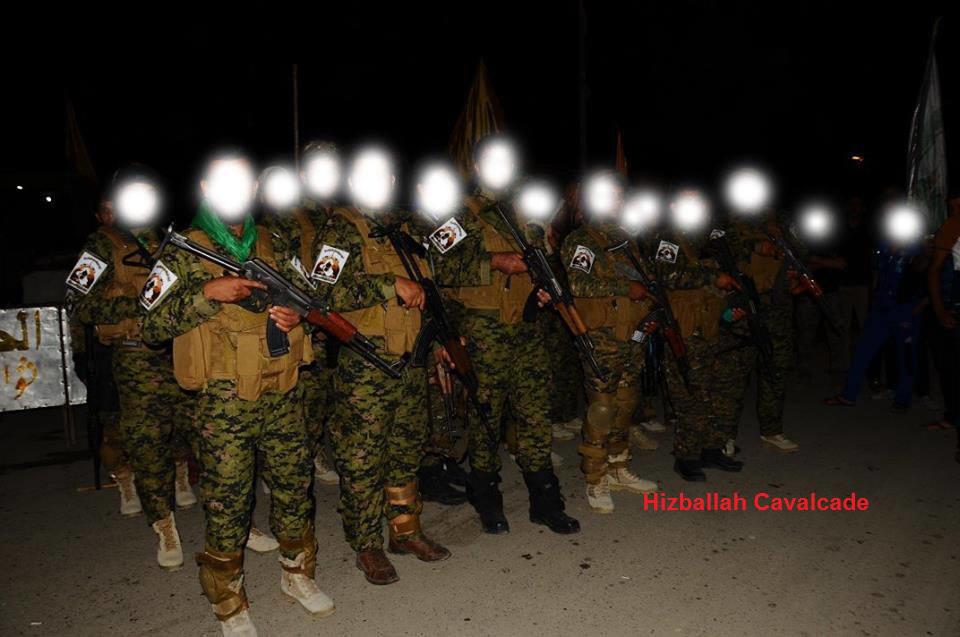
Figure 5: A group of LAFA-Iraq fighters stand equipped in a 2014 photograph.
Some Distinct Changes in LAFA-Iraq’s Messaging Compared to LAFA in Syria:
- Abu Ajeeb, LAFA’s Syria commander, has not been mentioned by pages associated with LAFA-Iraq. Instead, Iraqi cleric Sheikh Qasim al-Ta’i is listed at the group’s “qa’id” or leader.
- New symbolism linking themes related to Iraq and Syria.
- Sayyida Zaynab’s dome is combined with a map of Iraq.
The Qasim al-Ta’i Connection
1 See: https://now.mmedia.me/lb/en/lebanonnews/551145-hezbollah-announces-general-mobilization-in-syria?. 2 See: https://www.aawsat.net/2009/08/article55253964. 3 https://kassimaltaai.org/PageViewer.aspx?id=126. 4 See: https://www.sotaliraq.com/mobile-news.php?id=95733#axzz34mEL3nh4 5 See: https://mlm.jamestown.org/single/?tx_ttnews%5Btt_news%5D=41080&tx_ttnews%5BbackPid%5D=686&no_cache=1#.U6HdOvldWQ4.
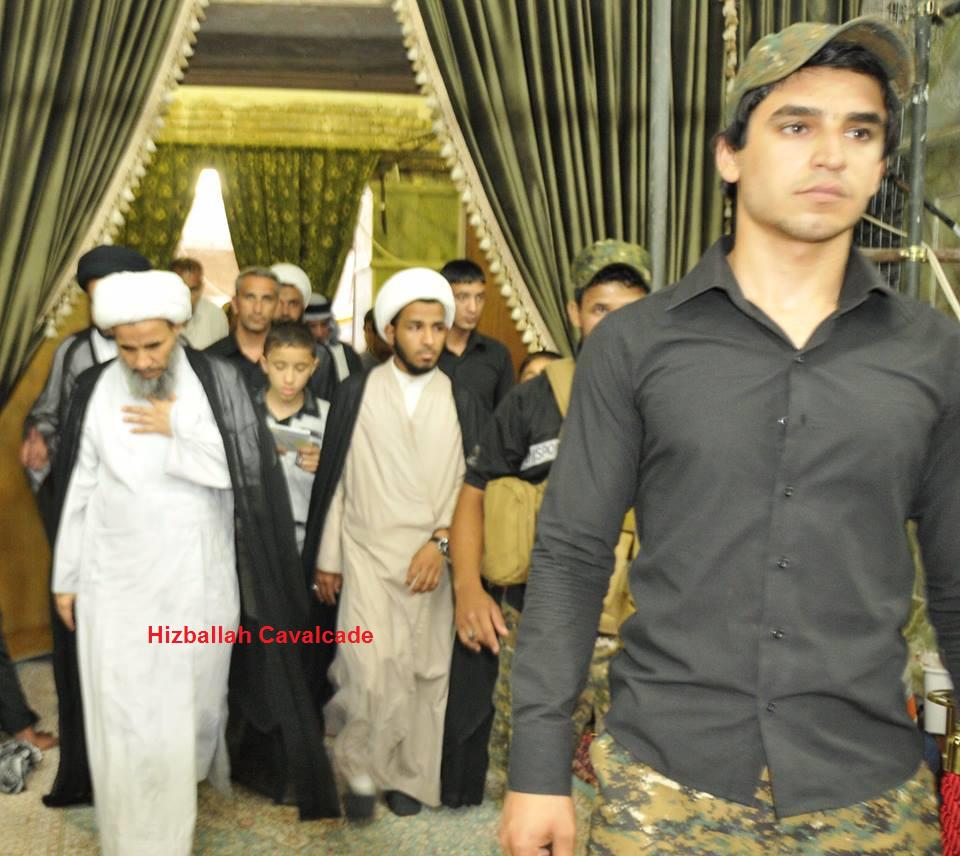
Figure 6: Al-Ta’i (far left in the white turban) with LAFA-Iraq escorts.
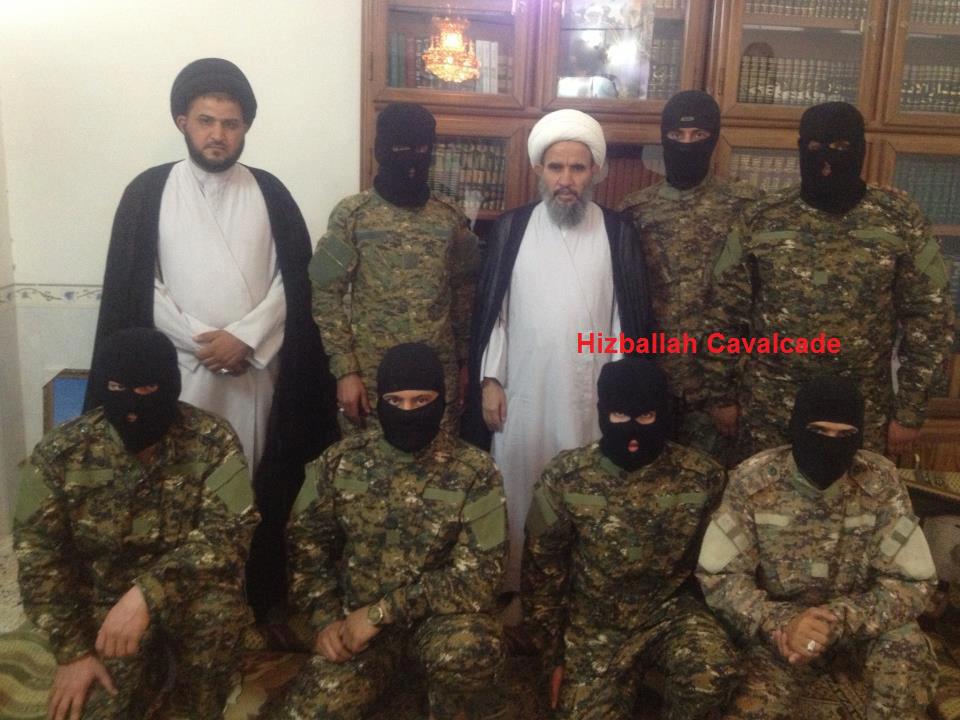
Figure 7: Al-Ta’i poses with Iraqi Shia Islamist militants headed to Syria. The photograph dates from 2013.
Iraqi Shiekh Qasim al-Ta’i, a cleric once supported by Muqtada al-Sadr and had been involved in the movement established by Muqtada al-Sadr’s father, Grand Ayatollah Muhammad Muhammad Sadiq Sadr. After the 1999 assassination of Grand Ayatollah Sadr, Ta’i branded himself as a main leader of the broadly defined “Sadrist movement.”2 Ta’i has also stated he is a supporter of Wilayat al-Faqih, the ideology of Iran’s Islamic Revolution established by Grand Ayatollah Khomeini.3
In April 2013, Ta’i claimed that the initial idea for the creation of LAFA in Damascus, “began in Najaf by a group of youth.” Interestingly, at the time Ta’i evoked memories of the bombing of Samarra’s Askari Shrine in 2006 to explain why LAFA needed to deploy to Syria.4 Today, LAFA-Iraq uses the defense of the Askari Shrine in Samarra as another way to explain why the group needs to be present in Iraq.
Despite Tai’s claims that the group was conceived of in Najaf in 2013, there is ample evidence that LAFA was already well-established in Damascus by the fall of 2012. It is also likely that other Iraqi Shia—splinters from Muqtada al-Sadr’s movement—refugees living in Syria formed the initial group and it was then reorganized and equipped with assistance given by Iranian Shia Islamist proxy groups.
However, al-Ta’i’s relationship with elements of LAFA in Damascus cannot be understated. Ta’i has a number of offices open around the area near Sayyida Zaynab and throughout 2013, he repeated calls for support for the Iraqi Shia-populated sections of LAFA. In some respects, the Iraqi Shia foreign fighter influence on LAFA in Damascus did lead to tensions. In the summer of 2013 there was discord over Abu Ajeeb’s leadership, leading to a firefight.5 Nevertheless, by fall 2013, some well-known fighters associated with LAFA in Syria and al-Ta’i were taped operating together in Damascus (see video: “The Original LAFA Operating in Damascus – Fall 2013”). The creation of LAFA-Iraq under a firmer leadership by al-Ta’i, erasure of other Syrian-based leadership, and utilization of the established group name and faces likely represents the latest evolution for a group which has undergone many transformations since its creation as a Shia-focused popular committee in 2012.
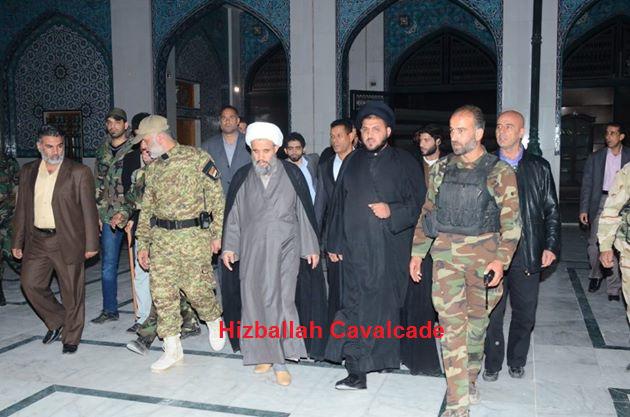
Figure 8: Leaders of the Damascus-based LAFA walk with al-Ta’i.
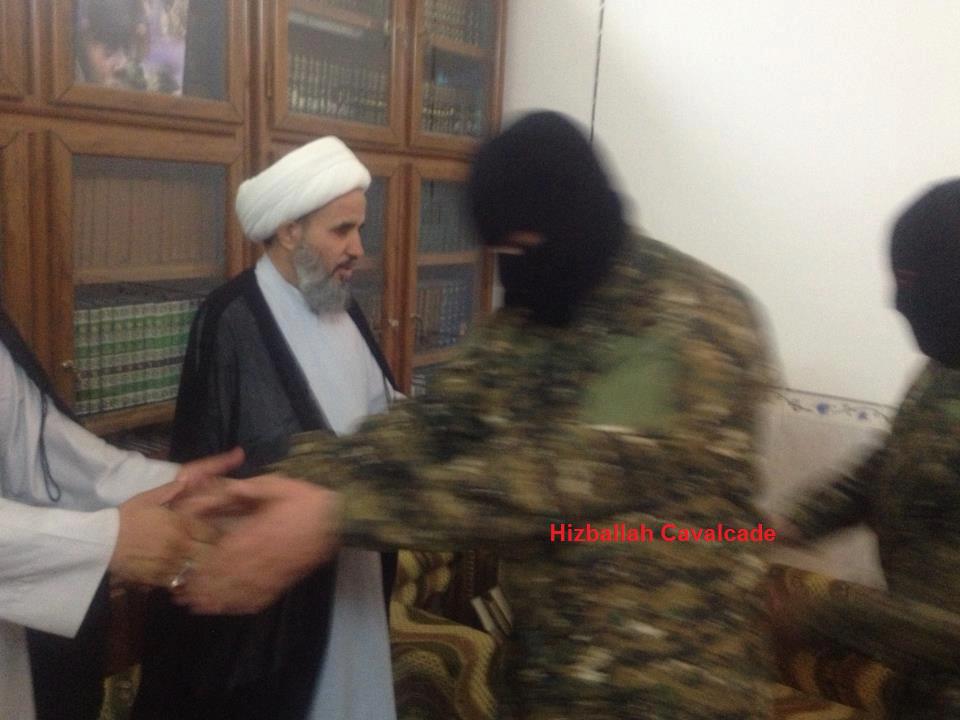
Figure 9: Al-Ta’i blesses Iraqi Shia jihadists planning on fighting in Syria.
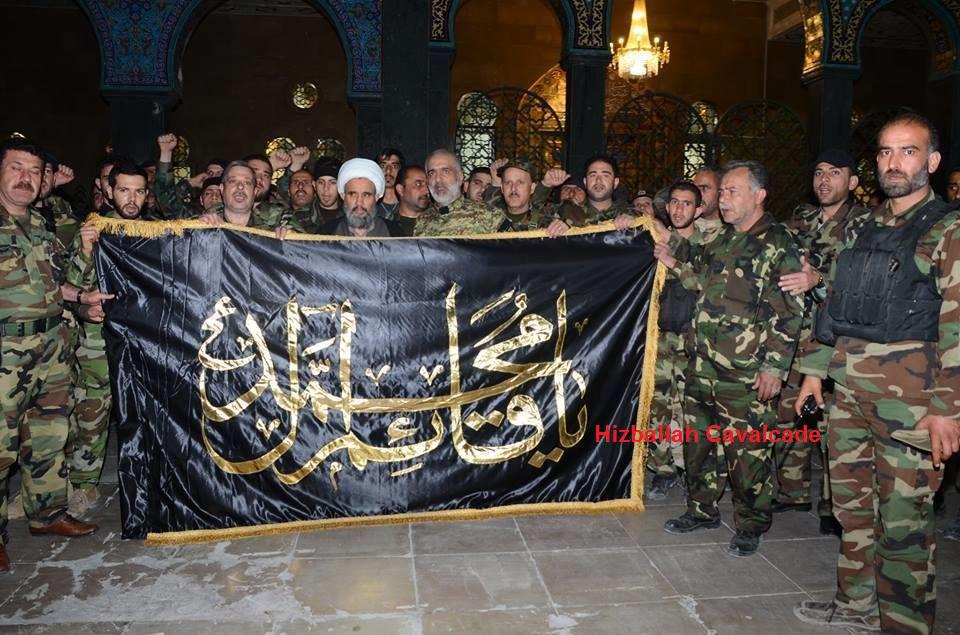
Figure 10: Iraqi Shia members of LAFA. Originally the photograph was distributed by LAFA social media sites. It has now been reprocessed by LAFA-Iraq.
___________
NOTES:
Check out my new piece for Politico: "ISIS's Massacre Strategy"
![]()
Over the weekend, dozens of pictures trickled out on one of the official Twitter accounts of the Islamic State of Iraq and al-Sham, the jihadist group currently setting off a panic in vast swathes of northern Iraq. The graphic photographs, according to ISIS, showed mass executions of Shiite soldiers who had fought in the Iraqi government’s military and security forces. In the images, ISIS fighters corral hundreds of individuals into trucks, forcing them to lie down in shallow graves with their heads to the ground, and then shooting them with Kalashnikovs.
ISIS claimed it had killed more than 1,700 people, though the pictures account for a few hundred at most. Though shocking, this level of brutality is hardly new for the extremist Sunni group, as it has attempted to provoke the Shiite population going back to last decade, when the volatile Abu Musab al-Zarqawi was its leader.
Click here to read the rest.
New statement from Ibn Taymīyyah Center for Media: "Your Victory Oh People of the Sunnah In Iraq"

Click the following link for a safe PDF copy: Ibn Taymīyyah Center for Media — “Your Victory Oh People of the Sunnah In Iraq”
_________
To inquire about a translation for this statement for a fee email: [email protected]
Hizballah Cavalcade: IRGC's First Martyr vs. ISIS in Iraq?
NOTE: For prior parts in the Hizballah Cavalcade series you can view an archive of it all here.
—
IRGC’s First Martyr vs. ISIS in Iraq?
By Phillip Smyth

Figure 1: Post claiming the IRGC member was killed fighting in Samarra.
According to Iranian media outlets Ali Reza Moshajari, a member of Iran’s Islamic Revolutionary Guard Corps (IRGC), was reportedly killed in an accident on June 14, 2014.1 In another article written by the IRGC-linked Tasnim News, Moshajari was killed in “Western Iran” while on “a mission.” In all of the articles he is described as a “martyr” or “hero martyr.” However, his death was not such an open and shut case. In fact, Moshajari’s death may be further evidence of direct IRGC presence in Iraq.
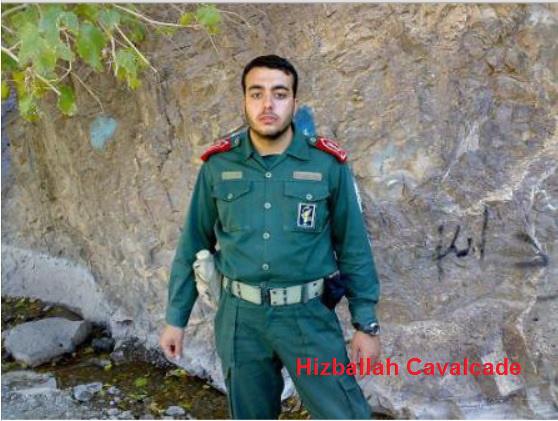
Figure 2: Moshajari in his IRGC uniform.
Before official announcements were made by groups such as Kata’ib Hizballah or Lebanese Hizballah stating they were both involved in fighting in Syria, both organizations would give vague explanations for the funerals of their members. The former would claim members had died due to illness or for other non-combat related reasons. Lebanese Hizballah would often only state that their fallen fighter had been “killed doing his jihadist duty.” Nevertheless, on social media run by many of these elements, it would be stated that the fallen fighters had in fact been killed in Syria. This may be the same type of structured announcement.
In some ways, this mirrors the announcements for the fallen IRGC member who was not only listed as a martyr for battle on a mission of some sort, but had competing accounts for how and where he died.
On Iran’s Islamic Revolutionary Guard Corps-linked (often these pages are run directly by the IRGC for internal and narrative purposes) social media networks–which run the gambit from Twitter and Facebook to Google Plus and YouTube—have cast Moshajari as an IRGC fighter who had been “martyred” in the IRGC deployment to Iraq.
It is possible that Moshajari was actually killed in an accident while deploying with IRGC units to sections of Iraq bordering Iran. CNN reported that 500 IRGC had been deployed to Diyala, an Iraqi province on the border with Iran.2 In Diyala Province, Kata’ib Hizballah and other Iraqi Shia Islamist groups backed by Iran have also reported being engaged in combat against units belonging to the Islamic State of Iraq and al-Sham (ISIS).
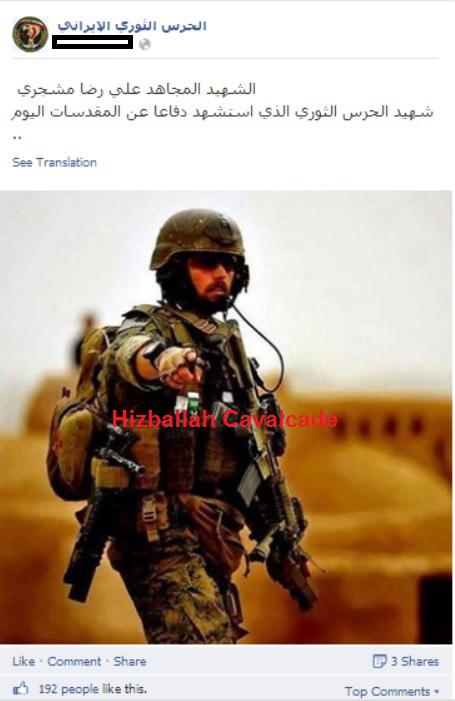
Figure 3: An IRGC Facebook page claiming Moshajari was the first IRGC martyr in Iraq while defending the shrines.
However, other Facebook-based sites with links to Iran’s regional Shia Islamist proxies and the IRGC also claimed that he had been involved in the “defense of Samarra.” Samarra has been a city of heavily publicized deployments by Iran’s Shi’a Islamist proxies within Iraq, mainly due to the fact that the holy Askari Shrine is located in the city.
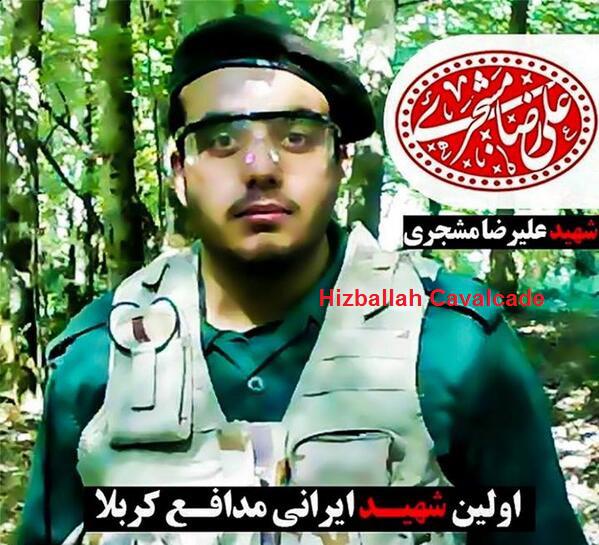
Figure 4: Killed IRGC member’s martyrdom poster. The poster was circulated primarily on Facebook and Twitter. It claims he was an “Iranian defender of Karbala.”
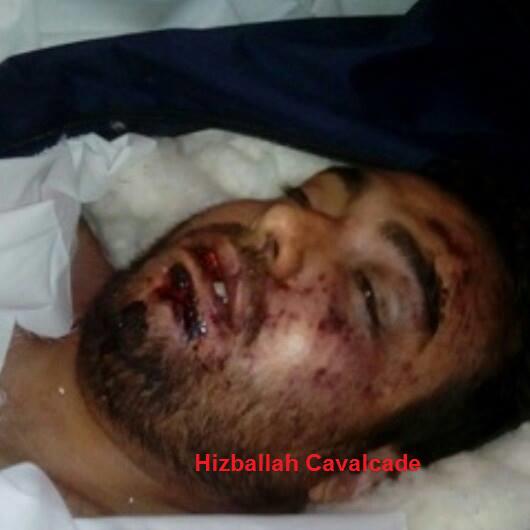
Figure 5: A photo of Moshajari’s face prior to his funeral.
_________
NOTES:
Bibliography on the History and Evolution of the Islamic State of Iraq and al-Sham

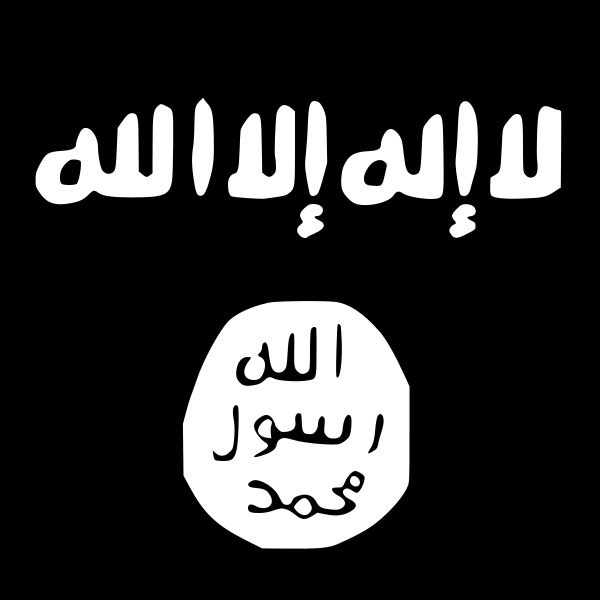
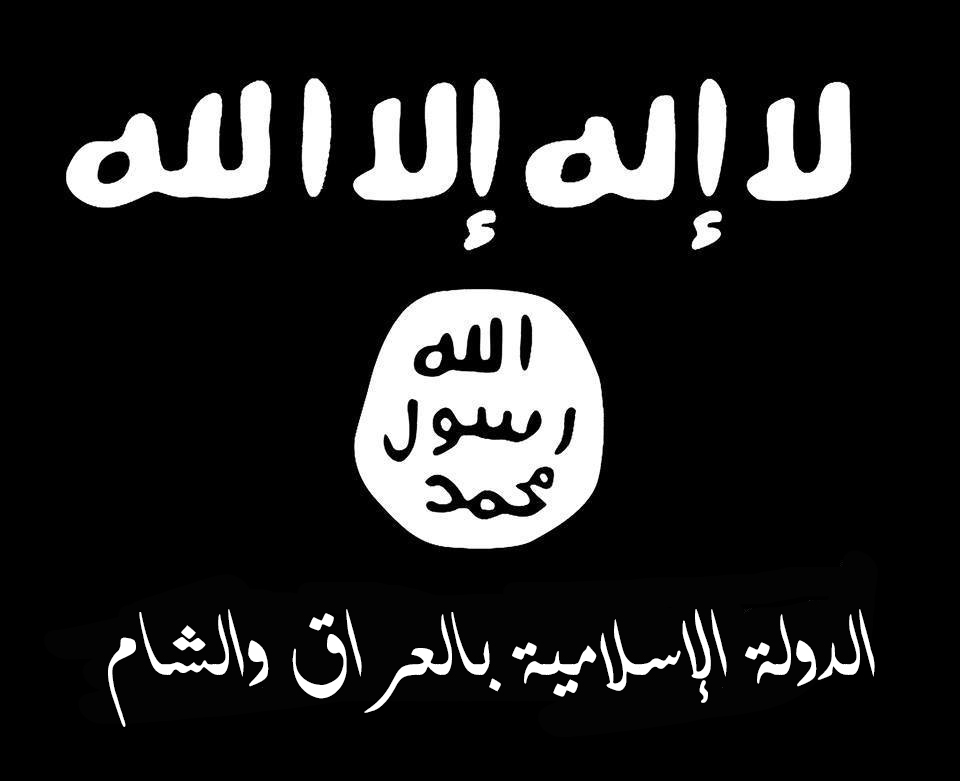 Articles:
Aaron Y. Zelin, “A Closer Look at ISIS (Part I),” September 10, 2013.
Aaron Y. Zelin, “A Closer Look at ISIS (Part II),” September 11, 2013.
Aaron Y. Zelin, “Al-Qaeda Disaffiliates with the Islamic State of Iraq and al-Sham,” February 4, 2014.
Aaron Y. Zelin, “Announcing An Islamic State in Syria,” April 9, 2013.
Aaron Y. Zelin, “The ISIS Guide to Building an Islamic State,” June 13, 2014.
Aaron Y. Zelin, “The Return of Sunni Foreign Fighters in Iraq,” June 12, 2014.
Abdul Hameed Bakier, “Internet Jihadists React to the Deaths of Al-Qa`ida’s Leaders in Iraq,” May 3, 2010.
Articles:
Aaron Y. Zelin, “A Closer Look at ISIS (Part I),” September 10, 2013.
Aaron Y. Zelin, “A Closer Look at ISIS (Part II),” September 11, 2013.
Aaron Y. Zelin, “Al-Qaeda Disaffiliates with the Islamic State of Iraq and al-Sham,” February 4, 2014.
Aaron Y. Zelin, “Announcing An Islamic State in Syria,” April 9, 2013.
Aaron Y. Zelin, “The ISIS Guide to Building an Islamic State,” June 13, 2014.
Aaron Y. Zelin, “The Return of Sunni Foreign Fighters in Iraq,” June 12, 2014.
Abdul Hameed Bakier, “Internet Jihadists React to the Deaths of Al-Qa`ida’s Leaders in Iraq,” May 3, 2010.Abdul Hameed Bakier, “Islamic State of Iraq Brings Internet Propaganda to the Streets,” April 24, 2010. Abdul Hameed Bakier, “Jihadis Ask How the Mujahideen Will Control an Islamic State of Iraq,” August 6, 2009. Andrea Plebani, “Ninawa Province: Al-Qa`ida’s Remaining Stronghold,” January 13, 2010.
Brian Fishman, “The Islamic State Returns to Fallujah,” January 10, 2014. Clint Watts, “ISIS’s Rise After al Qaeda’s House of Cards – Part 4 of “Smarter Counterterrorism”,” March 22, 2014. Cole Bunzel, “Caliphate Now: Jihadis Debate the Islamic State,” November 25, 2013. Cole Bunzel, “Introducing the “Islamic State of Iraq and Greater Syria”,” April 9, 2013. Cole Bunzel, “The Islamic State of Disobedience: al-Baghdadi Triumphant,” October 5, 2013. Daveed Gartenstein-Ross and Bridget Moreng, “Al-Qaeda’s Offensive Against Iraq’s Sahwa,” September 30, 2013. Douglas A. Ollivant and Brian Fishman, “State of Jihad: The Reality of the Islamic State in Iraq and Syria,” May 21, 2014. Gary Gambill, “Abu Mus’ab al-Zarqawi: A Biographical Sketch,” December 16, 2004. Gordon Corera, “Unraveling Zarqawi’s al-Qaeda Connection,” May 5, 2005. Letta Taylor, “Before the Fall: ISIS was wreaking havoc in Mosul long before it took over the city,” June 13, 2014. Matthew Levitt, “Zarqawi’s Jordanian Agenda,” December 16, 2004. Michael Knights, “The ISIL’s Stand in the Ramadi-Falluja Corridor,” May 29, 2014. Mr. Orange’s War Tracker, “Abû Bakr al-Baghdâdi and his possible Môsul past,” June 13, 2014. Murad Batal al-Shishani, “The Dangerous Ideas of the Neo-Zarqawist Movement,” September 3, 2009. Murad Batal al- Shishani, “The Salafi-Jihadist Movement in Iraq: Recruitment Methods and Arab Volunteers,” December 2, 2005. Nathaniel Rosenblatt, “ISIS’ Plan to Govern Syria – And What the US Should Do About It,” October 31, 2013 Pascale Combelles Siegel, “Islamic State of Iraq Commemorates its Two-Year Anniversary,” October 15, 2008. Sam Wyer, “The Islamic State of Iraq’s “Destroying the Walls” Campaign,” September 21, 2012. Reports: Benjamin Bahney, Howard J. Shatz, Carroll Ganier, Renny McPherson, and Barbara Sude, “An Economic Analysis of the Financial Records of al-Qa’ida in Iraq,” 2005. Brian Fishman, “Dysfunction and Decline Lessons Learned From Inside Al-Qa`ida in Iraq,” March 16, 2009.
Brian Fishman, “Fourth Generation Governance: Sheikh Tamimi defends the Islamic State of Iraq,” March 23, 2007.
Brian Fishman, “Redefining the Islamic State: The Fall and Rise of Al-Qaeda in Iraq,” August 2011.
Clint Watts, “Foreign Fighters: How are they being recruited?,” 2008.
Daniel Kimmage and Kathleen Ridolfo, “Iraqi Insurgent Media- The War Of Images And Ideas,” June 2007.
Jessica D. Lewis, “al-Qaeda in Iraq Resurgent: The Breaking The Walls Campaign, Part I,” September 2013.
Jessica D. Lewis, “al-Qaeda in Iraq Resurgent: The Breaking The Walls Campaign, Part II,” October 2013.
Jessica D. Lewis, “AQI’s “Soldiers’ Harvest” Campaign,” October 9, 2013.
Jessica D. Lewis, “The Islamic State of Iraq Returns To Diyala,” April 2014.
Joseph Felter and Brian Fishman, “Al-Qa’ida’s Foreign Fighters in Iraq: A First Look At the Sinjar Records,” January 2008.
Nibras Kazimi, “A Virulent Ideology in Mutation: Zarqawi Upstages Maqdisi,” September 2005.
Nibras Kazimi, “The Caliphate Attempted: Zarqawi’s Ideological Heirs, their Choice for a Caliph, and the Collapse of their Self-Styled “Islamic State of Iraq”,” July 2008.
Nibras Kazimi, “Zarqawi’s Anti-Shia Legacy: Original or Borrowed?,” November 2006.
Reuven Paz, “The Impact of the War in Iraq On the Global Jihad,” March 2005.
Journal Articles:
Ahmed S. Hashim, “The Insurgency in Iraq,” 2003.
Benjamin W. Bahney, Radha K. Iyengar, Patrick B. Johnston, Danielle F. Jung, Jacob N. Shapiro, and Howard J. Shatz, “Insurgent Compensation: Evidence from Iraq,” May 2013.
Christopher Hewitt and Jessica Kelley-Moore, “Foreign Fighters in Iraq: A Cross-National Analysis of Jihadism,” 2009.
George Michael and Joseph Scolnick, “The Strategic Limits of Suicide Terrorism in Iraq,” 2006.
Matthew Levitt, “Foreign Fighters and Their Economic Impact: a Case Study of Syria and al-Qaeda in Iraq (AQI),” September 2009.
Mohammed M. Hafez, “Jihad after Iraq: Lessons from the Arab Afghans,” 2009.
Mohammed M. Hafez, “Martyrdom Mythology in Iraq- How Jihadists Frame Suicide Terrorism in Videos and Biographies,” 2007.
Mohammed M. Hafez, “Suicide Terrorism in Iraq: A Preliminary Assessment of the Quantitative Data and Documentary Evidence,” 2007.
Petter Nesser, “Jihadism in Western Europe After the Invasion of Iraq: Tracing Motivational Influences from the Iraq War on Jihadist Terrorism in Western Europe,” September 2006.
Truls Hallberg Tønnessen, “Training on a Battlefield: Iraq as a Training Ground for Global Jihadis,” 2008.
Edited Volumes:
Brian Fishman (ed), “Bombers, Bank Accounts and Bleedout al-Qa’ida’s Road In and Out of Iraq,” July 22, 2008.
Books:
Asiem El Difraoui, Al-Qaida par l’image. La prophétie du martyre, 2013. Jean-Charles Brisard, Zarqawi: The New Face of Al-Qaeda, 2005. Mohammed M. Hafez, Suicide Bombers in Iraq: The Strategy and Ideology of Martyrdom, 2007.
al-Bayyāriq Foundation for Media presents a new statement from Anṣār al-Sharī’ah in Tunisia’s Abū ‘Iyāḍ al-Tūnisī: "Inspired By the Conquests of Iraq"
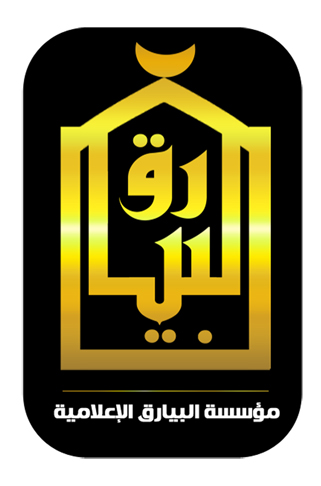
Click the following link for a safe PDF copy: Abū ‘Iyāḍ al-Tūnisī — “Inspired By the Conquests of Iraq”
__________
To inquire about a translation for this statement for a fee email: [email protected]
al-Ḥayāt Media Center presents a new issue of the Islamic State of Iraq and al-Shām’s magazine: “Islamic State Report #3"
NOTE: For earlier issues see: #2 and #1.
—
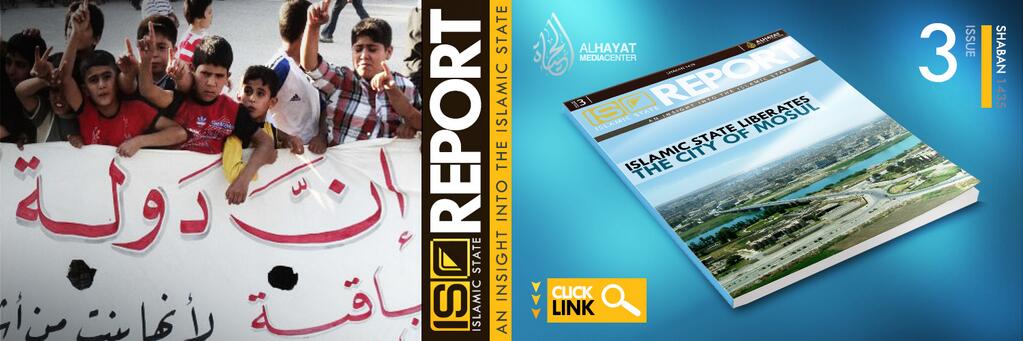
Click the following link for a safe PDF copy: Islamic State of Iraq and al-Shām — “Islamic State Report #3″
___________
